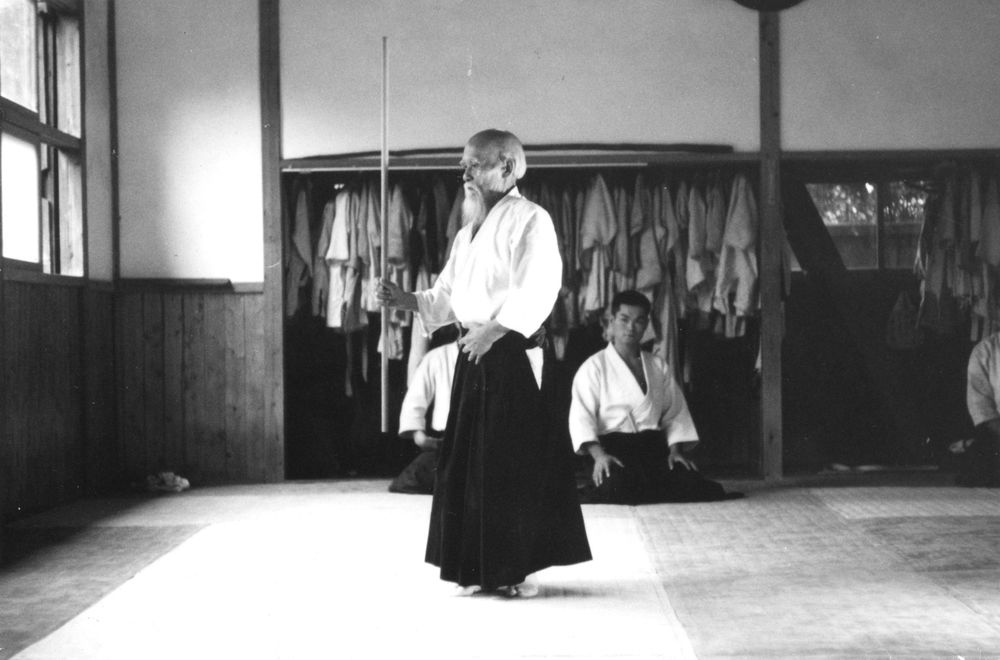Full Moon Morning Swim with Kim and Simon
They make this so much fun !!!!!!
Full Moon Morning Swim with Kim and Simon
They make this so much fun !!!!!!
Thinking about adding reading one book at month about productivity and business during this next year as access to growth and development.
http://www.fourhourworkweek.com/blog/2013/12/15/daily-rituals-mason-currey/
Daily Rituals — The Tim Ferriss Book Club, Book #2
This post is about the second book in the Tim Ferriss Book Club, which is limited to books that have dramatically impacted my life. The first selection was Vagabonding by Rolf Potts. The second is Daily Rituals by Mason Currey. Enjoy!
I’m endlessly fascinated by routines and rituals.
What do the most successful people do first thing in the morning? Or last thing at night? How do writers, artists, and creatives engineer “inspiration” when it eludes them? Naps? Drugs? Exercise? Weird sexual habits or eating regimens? Other?
The answers can help you.
For my birthday last year, I received a incredible book: Daily Rituals: How Artists Work. It was given to me by Josh Waitzkin, the renowned chess champion (best known from Searching for Bobby Fischer) and a master at deconstructing the world’s top performers.
He loved the book, and I fell head over heels in love with it.
It became my daily companion. There were gems everywhere, and I underlined nearly every page. I began to read 1-2 page-long profiles each morning with my pu-erh tea, and this ritual not only shocked me out of a major depressive funk, it also triggered a creative explosion.
I was having fun again… and getting tons done in the process!
Lena Dunham, creator of Girls, agrees: “I just can’t recommend this book [Daily Rituals] enough.”
Daily Rituals details nearly 200 routines of some of the greatest minds of the last four hundred years–famous novelists, poets, playwrights, painters, philosophers, scientists, and mathematicians. Among other things, this book will make you feel better about your own procrastination and odd habits! These A-players were a very peculiar bunch…
This post includes:
- A full overview of Daily Rituals
- A sample of Daily Rituals (Introduction)
The brand-new audiobook of Daily Rituals includes exclusive bonus material — introductions for each of the 161 creative minds. This makes each routine easier to place in context and use.
And, just as Josh gifted this book to me, I hope you consider gifting Daily Rituals to your family and friends this holiday season. It could change their lives.
Just click “Give as a Gift” here. You can schedule the audiobook to be emailed to your recipient on 12/25 or whenever you like.
Daily Rituals — Full Overview
Franz Kafka, frustrated with his living quarters and day job, wrote in a letter to Felice Bauer in 1912, “time is short, my strength is limited, the office is a horror, the apartment is noisy, and if a pleasant, straightforward life is not possible then one must try to wriggle through by subtle maneuvers.”
Kafka is one of 161 inspired–and inspiring–minds, among them, novelists, poets, playwrights, painters, philosophers, scientists, and mathematicians, who describe how they subtly maneuver the many (self-inflicted) obstacles and (self-imposed) daily rituals to get done the work they love to do, whether by waking early or staying up late; whether by self-medicating with doughnuts or bathing, drinking vast quantities of coffee, or taking long daily walks. Thomas Wolfe wrote standing up in the kitchen, the top of the refrigerator as his desk, dreamily fondling his “male configurations”… Jean-Paul Sartre chewed on Corydrane tablets (a mix of amphetamine and aspirin), ingesting ten times the recommended dose each day… Descartes liked to linger in bed, his mind wandering in sleep through woods, gardens, and enchanted palaces where he experienced “every pleasure imaginable.”
Here are: Anthony Trollope, who demanded of himself that each morning he write three thousand words (250 words every fifteen minutes for three hours) before going off to his job at the postal service, which he kept for thirty-three years during the writing of more than two dozen books… Karl Marx… Woody Allen… Agatha Christie… George Balanchine, who did most of his work while ironing… Leo Tolstoy… Charles Dickens… Pablo Picasso… George Gershwin, who, said his brother Ira, worked for twelve hours a day from late morning to midnight, composing at the piano in pajamas, bathrobe, and slippers…
Here also are the daily rituals of Charles Darwin, Andy Warhol, John Updike, Twyla Tharp, Benjamin Franklin, William Faulkner, Jane Austen, Anne Rice, and Igor Stravinsky (he was never able to compose unless he was sure no one could hear him and, when blocked, stood on his head to “clear the brain”).
Brilliantly compiled and edited, and filled with detail and anecdote, Daily Rituals is irresistible, addictive, and magically inspiring.
Daily Rituals Sample — The Introduction
[TIM: The following words are from author Mason Currey.]
Nearly every weekday morning for a year and a half, I got up at 5:30, brushed my teeth, made a cup of coffee, and sat down to write about how some of the greatest minds of the past four hundred years approached this exact same task–that is, how they made the time each day to do their best work, how they organized their schedules in order to be creative and productive.
By writing about the admittedly mundane details of my subjects’ daily lives–when they slept and ate and worked and worried–I hoped to provide a novel angle on their personalities and careers, to sketch entertaining, small-bore portraits of the artist as a creature of habit. “Tell me what you eat, and I shall tell you what you are,” the French gastronome Jean Anthelme Brillat-Savarin once wrote. I say, tell me what time you eat, and whether you take a nap afterward.
In that sense, this is a superficial book. It’s about the circumstances of creative activity, not the product; it deals with manufacturing rather than meaning.
But it’s also, inevitably, personal. (John Cheever thought that you couldn’t even type a business letter without revealing something of your inner self–isn’t that the truth?) My underlying concerns in the book are issues that I struggle with in my own life: How do you do meaningful creative work while also earning a living? Is it better to devote yourself wholly to a project or to set aside a small portion of each day? And when there doesn’t seem to be enough time for all you hope to accomplish, must you give things up (sleep, income, a clean house), or can you learn to condense activities, to do more in less time, to “work smarter, not harder,” as my dad is always telling me? More broadly, are comfort and creativity incompatible, or is the opposite true: Is finding a basic level of daily comfort a prerequisite for sustained creative work?
I don’t pretend to answer these questions in the following pages–probably some of them can’t be answered, or can be resolved only individually, in shaky personal compromises–but I have tried to provide examples of how a variety of brilliant and successful people have confronted many of the same challenges. I wanted to show how grand creative visions translate to small daily increments; how one’s working habits influence the work itself, and vice versa.
The book’s title is Daily Rituals, but my focus in writing it was really people’s routines. The word connotes ordinariness and even a lack of thought; to follow a routine is to be on autopilot. But one’s daily routine is also a choice, or a whole series of choices. In the right hands, it can be a finely calibrated mechanism for taking advantage of a range of limited resources: time (the most limited resource of all) as well as willpower, self- discipline, optimism. A solid routine fosters a well- worn groove for one’s mental energies and helps stave off the tyranny of moods. This was one of William James’s favorite subjects. He thought you wanted to put part of your life on autopilot; by forming good habits, he said, we can “free our minds to advance to really interesting fields of action.”
Ironically, James himself was a chronic procrastinator and could never stick to a regular schedule (covered in this book). As it happens, it was an inspired bout of procrastination that led to the creation of this book.
One Sunday afternoon in July 2007, I was sitting alone in the dusty offices of the small architecture magazine that I worked for, trying to write a story due the next day. But instead of buckling down and getting it over with, I was reading The New York Times online, compulsively tidying my cubicle, making Nespresso shots in the kitchenette, and generally wasting the day. It was a familiar predicament. I’m a classic “morning person,” capable of considerable focus in the early hours but pretty much useless after lunch. That afternoon, to make myself feel better about this often inconvenient predilection (who wants to get up at 5:30 every day?), I started searching the Internet for information about other writers’ working schedules. These were easy to find, and highly entertaining. It occurred to me that someone should collect these anecdotes in one place–hence the Daily Routines blog I launched that very afternoon (my magazine story got written in a last-minute panic the next morning) and, now, this book.
The blog was a casual affair; I merely posted descriptions of people’s routines as I ran across them in biographies, magazine profiles, newspaper obits, and the like. For the book, I’ve pulled together a vastly expanded and better researched collection, while also trying to maintain the brevity and diversity of voices that made the original appealing. As much as possible, I’ve let my subjects speak for themselves, in quotes from letters, diaries, and interviews. In other cases, I have cobbled together a summary of their routines from secondary sources. And when another writer has produced the perfect distillation of his subject’s routine, I have quoted it at length rather than try to recast it myself. I should note here that this book would have been impossible without the research and writing of the hundreds of biographers, journalists, and scholars whose work I drew upon. I have documented all of my sources in the Notes section, which I hope will also serve as a guide to further reading.
Compiling these entries, I kept in mind a passage from a 1941 essay by V. S. Pritchett. Writing about Edward Gibbon, Pritchett takes note of the great English historian’s remarkable industry–even during his military service, Gibbon managed to find the time to continue his scholarly work, toting along Horace on the march and reading up on pagan and Christian theology in his tent. “Sooner or later,” Pritchett writes, “the great men turn out to be all alike. They never stop working. They never lose a minute. It is very depressing.”
What aspiring writer or artist has not felt this exact sentiment from time to time? Looking at the achievements of past greats is alternately inspiring and utterly discouraging. But Pritchett is also, of course, wrong.
For every cheerfully industrious Gibbon who worked nonstop and seemed free of the self-doubt and crises of confidence that dog us mere mortals, there is a William James or a Franz Kafka, great minds who wasted time, waited vainly for inspiration to strike, experienced torturous blocks and dry spells, were racked by doubt and insecurity. In reality, most of the people in this book are somewhere in the middle–committed to daily work but never entirely confident of their progress; always wary of the one off day that undoes the streak. All of them made the time to get their work done. But there is infinite variation in how they structured their lives to do so.
This book is about that variation. And I hope that readers will find it encouraging rather than depressing. Writing it, I often thought of a line from a letter Kafka sent to his beloved Felice Bauer in 1912. Frustrated by his cramped living situation and his deadening day job, he complained, “time is short, my strength is limited, the office is a horror, the apartment is noisy, and if a pleasant, straightforward life is not possible then one must try to wriggle through by subtle maneuvers.” Poor Kafka! But then who among us can expect to live a pleasant, straightforward life? For most of us, much of the time, it is a slog, and Kafka’s subtle maneuvers are not so much a last resort as an ideal.
Here’s to wriggling through.
Having fun with my new camera


Had a wonderful thanksgiving with my friends phillip and adrienne
I am very excited about the up coming workship by Robert Nadeau
I made my first totally iphone video today

I am very sad to loss Miguel Wooding, one of my best friends and training partner. It is a special bond of training with a person for over 10 year in the intimate art of Aikido.
Miguel made a difference to everyone he touched - see more
Thinking about times at the beach the past few summers
Missing my dad
I had a wonderful Thanksgiving with my friends Phillip and Adrian
 "If your heart is large enough to envelop your adversaries, you can see right through them and avoid their attacks. And once you envelop them, you will be able to guide them along the path indicated to you by heaven and earth. "
"If your heart is large enough to envelop your adversaries, you can see right through them and avoid their attacks. And once you envelop them, you will be able to guide them along the path indicated to you by heaven and earth. "
By Morihei Ueshiba
My golfing buddy Phillip has made the news. He is a wonderful healer.
I found this video on youtube and i was quiet surprised at how familiar this video was for me. I have spent so many hours on this quad in the same place this video was shot. This is wonderful to remember.

Thinking about what a amazing world we live in today. Sitting in a cafe in San Rafael, Calif. writing this blog. I have access to movies, music, the world wide web.
Exploring my iPad wonders and fun.
Missing my Dad today, he would have love the iPad
Last saturday I worked on my goals for the second half of this year. I have been working with a wonder coach for the last few years Eroca Lowe. http://www.erocalowe.com/
The day was focused on making a book for our vision for the year. I did mine in video.


So many people. I will be back.
Read ( well listened via podcast) about search-engine-optimization-for-photographers
http://frederickvan.com/2010/04/search-engine-optimization-for-photographers/